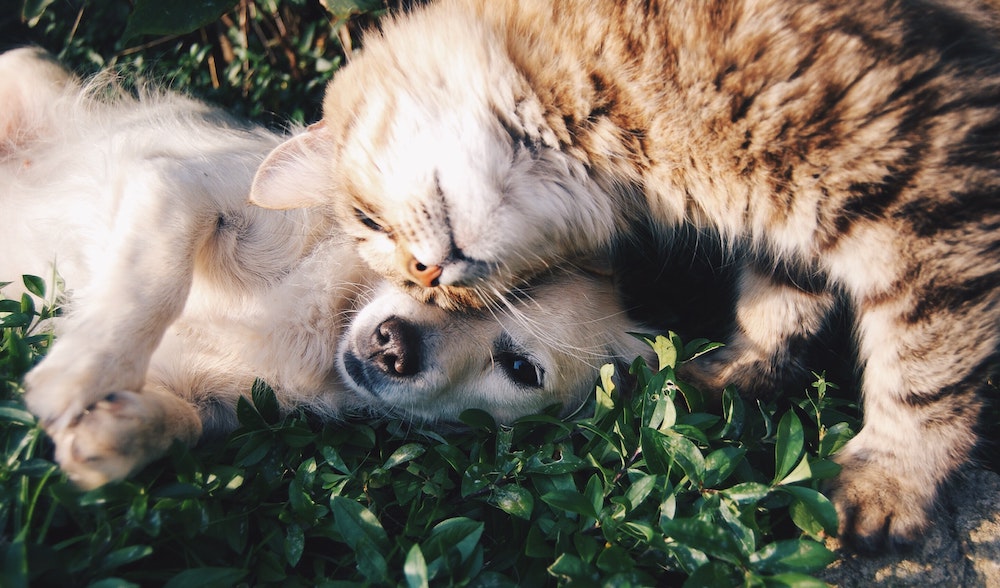Easter is filled with spending time with family, including our puurfect pets. Easter is packed full of fun and indulgences for us, but for our pets, there are lots of hazards around which could turn a relaxing Easter weekend into an emergency trip to the vets very quickly! To prevent this, we have put together the top Easter hazards below.
Chocolate
Chocolate can make dogs very poorly and can even be fatal. This is due to a toxin called Theobromine. Humans can break down Theobromine quickly enough for it not to act as a poison. However, dogs metabolise the chemical much slower, meaning it can have detrimental effects. (Chocolate is also bad for other pets such as cats and rabbits – however, they are less likely to eat chocolate as they cannot taste sweetness).
Symptoms of Theobromine poisoning include, muscle stiffness, tremors, vomiting, heart arrhythmias and fitting. The poison can take between 4 – 24hrs for signs to appear.
If you think your pet has eaten chocolate, we’d recommend you take them to your vet immediately.
Sweets
Sweets, gum, toothpaste, baked goods, and some diet foods are sweetened with xylitol. Xylitol is a sweetener that is toxic to our pets. It can cause your dog/cats blood sugar to drop and can also cause liver failure. Early symptoms include vomiting, lethargy, and coordination problems. This could also lead to your dog having seizures.
Hot Cross Buns
Hot Cross Buns are another Easter time favourite, that should not be shared with your fluffy friends. This is because they contain raisins and other dried fruits, which cause kidney failure in both dogs and cats.
Spring flowers
The first flowers of the year are beginning to bloom and most are toxic to our pets. However, us hoomans love to give them as gifts and have them round to brighten up our homes but there are a few we recommend completely avoiding bringing into your home with pets. These include;
Lilies – Often gifted around Easter time, and they’re extremely toxic to cats! Every part of the lily is dangerous; this even includes the water it’s sitting in! It causes kidney failure and can be fatal if treatment isn’t given quickly. Some of the signs your cat may be suffering from lily poisoning are as follows: dehydration, extreme thirst, vomiting, diarrhoea, seizures and even death.
Daffodil – When daffodils start popping up, you know it’s spring! But unfortunately, they’re poisonous to both cats and dogs! They can suffer from vomiting, lethargy and even fits if they eat the bulb, flower or again even the water they sit in.
Tulips – The bright coloured tulip is beautiful, but they are highly poisonous to dogs, cats and even horses. If eaten, it can also cause drooling, diarrhoea, and vomiting. More severe symptoms also include difficulty breathing and heart problems.
What to tell the vets
Sadly, most toxins listed won’t show symptoms until the damage is already done and at which point it is not reversible (especially raisins and lilies which effect the kidneys). A lot more can be done in the first 4 hours to save your pet, than when they start showing signs of being unwell. If you think your pet has eaten any of the above, it’s important you get in contact with your vet ASAP and give them as much detail as possible.
Where possible you should provide your veterinary practice with information on:
- What poison you think your pet has been exposed to (i.e. chocolate, flowers etc.). Include any product names, or lists of ingredients if relevant. If they have ingested any sweet or chocolates – take the wrapper to the vets!
- How much they may have been exposed to if known (i.e. chocolate bar, half of a hot cross bun etc.)
- When your pet was exposed to the poison (i.e. 5 minutes, 5 hours or 5 days ago)
- If your pet has been unwell and, if so, what symptoms are they showing?
It is easier for a vet to care for a poisoned pet if it is treated sooner rather than later. If you are in any doubt, don’t wait for your pet to become unwell before calling for advice.




